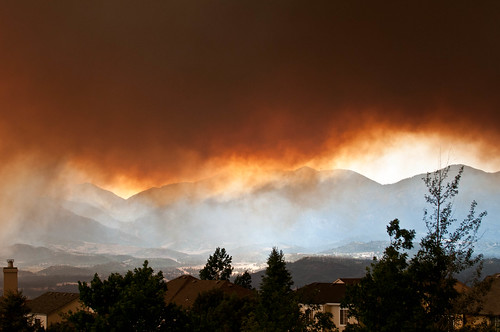- Emergency Communication Lessons Learned from the Colorado Fires 8/16/12
Earlier this year, the Lower North Fork and Waldo Canyon fires raged through Colorado. The Waldo Canyon Fire currently holds the unhappy record of being the most destructive fire in state history, and it’s also the most expensive, with insurance claims already totaling more than $350 million.
Five people died during those fires, including at least one who had signed up to receive emergency communication from her community but never got a call. No system could have prevented the fires themselves, of course, but a more effective one could definitely have lessened the human impact of the disaster.
Let’s take a look at some of shortcomings in the realm of emergency notification:
Preregistration
Traditional systems, like the Jefferson County reverse 911 and El Paso/Teller County E911 service, require preregistration. Which means folks need to have heard about the service prior to the time of the calls going out. From a PR and outreach standpoint, the effort required just to get people to sign up for these systems is monumental. Historically, only 5 to 10 percent of residents sign up, and the systems don’t cover visitors and temporary residents at all.
Even when governments get residents’ contact information from phone companies and service providers, there’s no guarantee someone will end up in the database unless they add themselves.
The landline conundrum
Many of these systems also target only home phones. As of late 2011, 32 percent of homes had only mobile phones, and one in six homes received nearly all of their calls with a mobile phone even if there was a landline present.
These systems tap into often-outdated databases and actually reach far fewer households than intended — a typical success rate is about 50 percent, according to the Denver Post’s coverage of the Lower North Fork fire.
Outdated technology
Relying on traditional technologies can also be risky when infrastructure crumbles during times of disaster. Jammed phone lines and electricity outages are just a couple of the concerns around this.
Other systems currently in use employ outdated notification channels. The television audience has declined by half since 1965, and only 85 percent of the TV viewers watch today is live anyway — those emergency broadcasts won’t do much good a week later on a DVR recording! Radio broadcasting also is increasingly fragmented, and with streaming applications like Pandora and Spotify personalizing and globalizing music listening more than ever, radio is really falling by the wayside.
Timing
And finally, there’s the issue of time. In the situation of a slow-spreading wildfire, minutes may be enough to get a message out. But in the case of a gunman, terrorist threat or fast-moving storm, it’s seconds that count. Relying on messages spread by traditional land-line communications and other outmoded technologies just isn’t enough today.
In communities already attempting to notify the public through multiple channels, thus far it’s a piecemeal, fragmented approach at best. There’s more that can be done, and Amatra is working to bring the technology and resources to reach communities of all sizes in times of crisis — more quickly and more reliably.
In our next blog, we’ll talk about how social media and our new geographically based technology — which requires no signup — can greatly improve public safety communication.


